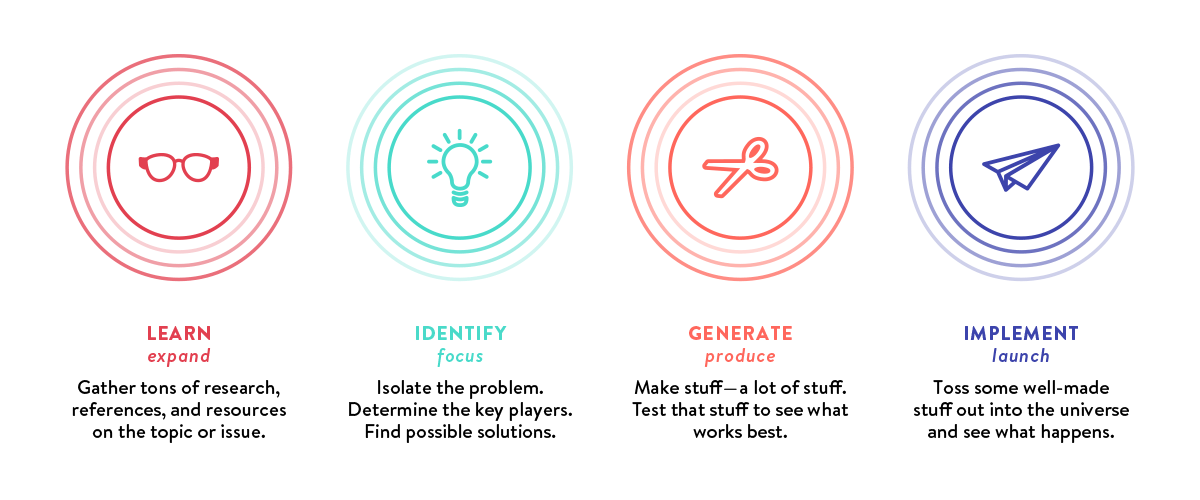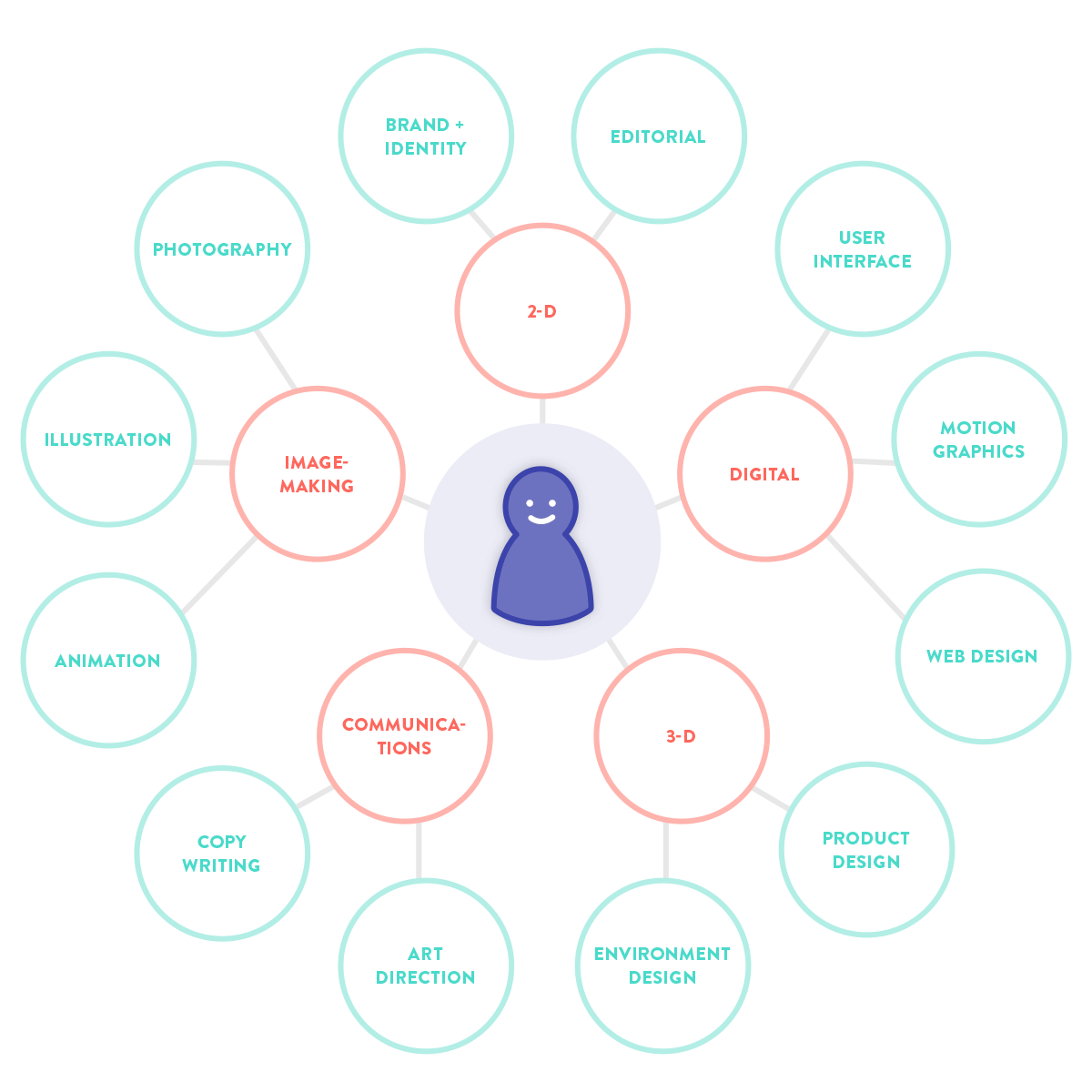by Ashley Hairston Doughty
THE TURN-OFF
I tend to cringe when people ask me what I do. Why? Here is the typical script:
“So what do you do, Ashley?”
“I’m a graphic designer.”
“Oh! So you work on the computer and stuff, right?”
At this point, I could sit the person down and launch into what I actually do as a graphic designer.
Instead, I usually roll my eyes and mutter, “Umm… Yeah.” Then shut the conversation down in typical introversive fashion.
If you are one of the culprits—someone who has asked this question before—it’s okay! I wasn’t really sure what graphic design was until I started looking at colleges, trying to figure out what my major could be. In middle school and high school, I designed a lot of t-shirts (I’m sure I was referred to as “that quiet black girl that makes a lot of t-shirts”). But that was the extent of my design knowledge.
THINK OF A CHEF…
I love food, and I’m currently working as a designer for a food company. So let’s use a food-related analogy, shall we?
I would compare the designer’s dilemma to asking an executive chef, “Hey, so you use a lot of knives, right?”
Well, duh. Of course. Knives are tools. A chef uses many different tools: knives, spoons, spatulas, pans, bowls. Even pens and note pads.
Thanks to reality TV and cooking shows, we know that chefs have to develop menus, find sources for the ingredients, train their sous chefs, manage the kitchen, etc. It obviously is much more involved than just “playing with knives.”
COMPUTERS ARE TOOLS
No, really. They are literally tools. Knives are tools for a chef. Computers and software are tools for a designer. Done and done.
WHAT GRAPHIC DESIGN IS
We actually encounter designed pieces in most aspects of our lives. Just go to the store, turn on the TV, or stand at the bus stop. See? Design there, there, and there.
In essence, graphic design is the intentional display of visual information for an audience. The AIGA—the professional association for design—defines graphic design as follows:
“Graphic design, also known as communication design [or visual communication] is the art and practice of planning and projecting ideas and experiences with visual and textual content.”
In higher education, graphic design is often separated from other fine art fields because it primarily deals with conveying a specific message to an audience. Fine arts, like painting, tend to center around experimentation with materials, expression through the senses, and interpretation of visuals/sounds/experiences.
Design can do all these things, but the end result almost always has some explicit intention behind it, something the viewer/user/consumer is supposed to understand. It serves a specific purpose or function.
I would argue that fine art can be design and design can be fine art. Therefore the two areas don’t really need to be separated. But that’s for another blog post.
WHAT GRAPHIC DESIGNERS DO
Process is a key word in how designers work. The development and implementation of designs involves processes and methods that help designers come up with the most effective strategies.
Each designer has their own processes and methods for coming up with ideas and producing their work. The most clear way I have found to define the design process, in general, has been John Bower’s four phases of problem-solving:
Learn: Gather as much information (research!) as possible about the problem and the topic, from a variety of sources.
Identify: Find the root problem and the people involved. Understand what needs to happen in order for the problem to be solved.
Generate: Make a bunch of drafts, sketches, models, or examples. Test those ideas to find the most effective/efficient/probable solution.
Implement: Take one (or several) of those ideas and produce functional pieces that can put out into the world and used by the intended audience.
DESIGN PROCESS STAGES

When designers develop work, they typically go through these four stages.
My process typically works in the sequential order above. However, these phases can take place in any order. Some phases may take longer or be more involved than others. It’s very unique to each designer and project.
THE ROLES OF DESIGNERS
Depending on the position and the company, a graphic designer will have certain roles they are asked to play. In terms of finding a job, it is good for candidates to be able to preform many of these functions:
Problem-solving
Idea generation
Drafting/sketching
Researching
Writing
Project management
Layout design
Typography
Visual hierarchy
Color selection
Software
Coding (HTML, CSS, JavaScript, content management, etc.)
Print production
Copy editing
Assembly
Bookbinding
Notice that using software is only one component of a designer’s job functions! I will go into some of these roles in more detail in future blog posts.
DESIGN SPECIALIZATIONS
Some individuals will take on multiple specializations, while others focus on one area. If you are considering graphic design as a career, these are some positions to look into.

Designers take on one or more specializations depending on their skills, talents, and the needs of their position.
Art direction: Overseeing design and creative projects.
Brand + identity design: Creating logos and the defining features of brands.
Editorial design: Layout design for publications.
Type design: Crafting typefaces and developing fonts.
Product design: Engineering the look and feel of consumer products.
Packaging design: Making vessels for consumer goods.
Surface design: Working with the surfaces of tactile items, such as fabric and paper.
Print design: Designing printed materials, from brochures to stationery.
Web design: Layout and implementation of websites, blog themes, and the like.
User interface (UI) design: Developing systems for people to interact with digital mediums.
App design: Creating applications for the web and mobile devices.
Motion graphics: Time-based designs for television, film, and more.
Illustration: Images created to explain, elevate, or expand upon text.
Animation: Image-based motion design or moving illustrations.
Advertising: Promotions all of types for corporations, institutions, etc.
And these are just scratching the surface. As time goes on and technology advances, new careers will emerge. You might end up creating your own job title! Whoa!
SO NOW YOU KNOW
There it is. Graphic designers do a lot more than just staring at computer screens. The next time you are introduced to a graphic designer, you can ask them about their specialty, rather than what software they use. 😉 Your new graphic design friend will be so delighted!
About the author: Ashley Hairston Doughty is a Graphic Designer at Sysco Corporation. She also provides custom design services and educational resources through her business, Design Kettle. This article first appeared on the Design Kettle blog, which promotes discovery, exploration, process, and learning. Through the site, Ashley strives to help clients, customers, and budding designers better understand what makes an effective design and how to create a captivating visual story. Ashley and her husband Devin reside in Houston with their adorable (yet mischievous) chocolate lab puppy named Eddie.